HARVEST REPORT – 2025
Prepared by Dr. Laura Catena, Chief Winemaker Alejandro Vigil and Viticulturist Luis Reginato
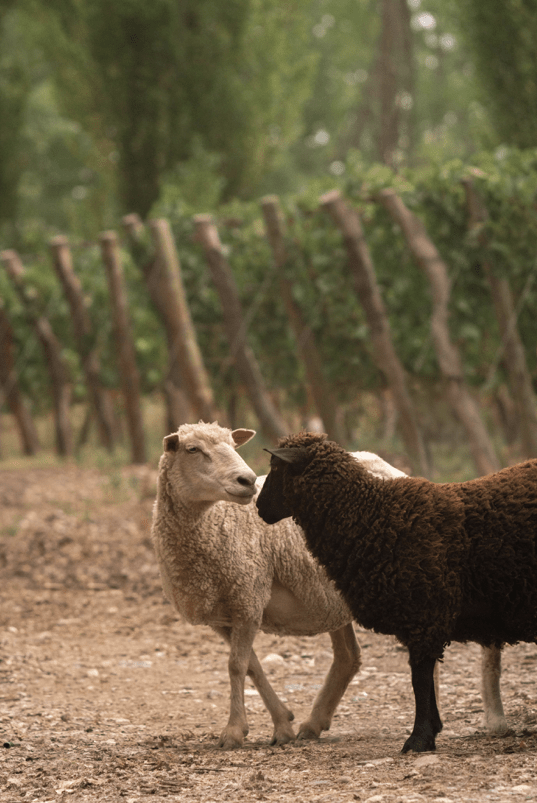

The 2025 harvest began with a very dry and warm winter – the driest in the past three years. The growing season followed the same trend, with a notable lack of rainfall and consistently warm temperatures, especially during the day. January and February saw high maximum temperatures, often exceeding 35°C (95°F). A cool front moved in during March and April—temperatures went down, and we saw light rains. This fresh front combined with optimal ambient humidity and cool nights throughout the season resulted in a slowing of the reds’ harvest which we finished picking in mid-April. The kind of expressiveness, concentration and aromatics—accompanied by moderate sugar levels—that we are seeing this warm year, indicate that our high-altitude regions can be considered resilient to climate change.
Budbreak and Flowering
Budbreak came early this year, starting around September 15 in the lower vineyards and about 10 days later in the higher altitude regions. Warm spring temperatures led to rapid growth and early flowering, with very good fruit set across all varieties. Thanks to the excellent conditions during flowering, yields were higher than expected.
Veraison and Ripening
The dry and warm conditions continued into summer, with veraison occurring between January 10 and 25 depending on the location and variety. The grapes ripened steadily, with great concentration of color and tannins, due to the small berry size and thick skins. The warm daytime temperatures sped up ripening, while the cool nights preserved aromatic complexity and freshness.
Harvest
The harvest began early in all regions. In the Uco Valley, picking started around February 15 and was mostly completed by mid-April. In Luján de Cuyo, where temperatures were slightly higher, the harvest began as early as February 10. The grapes were very healthy and showed no signs of fungal diseases due to the lack of rain.
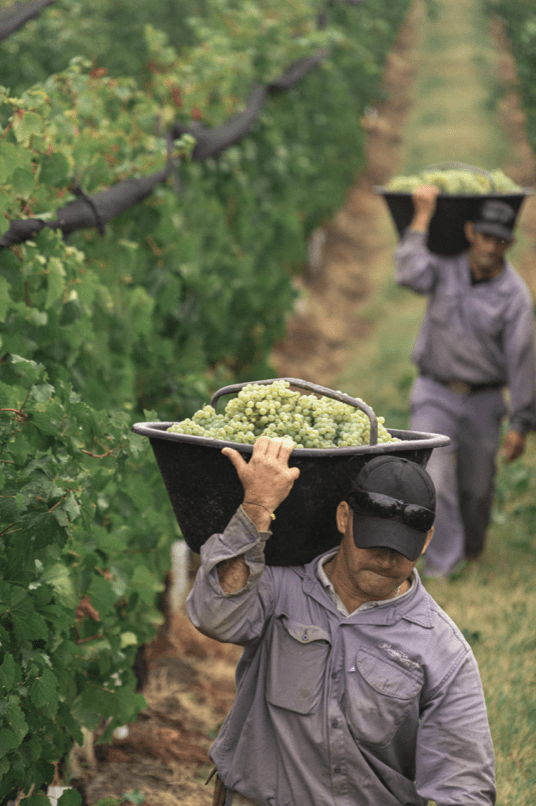
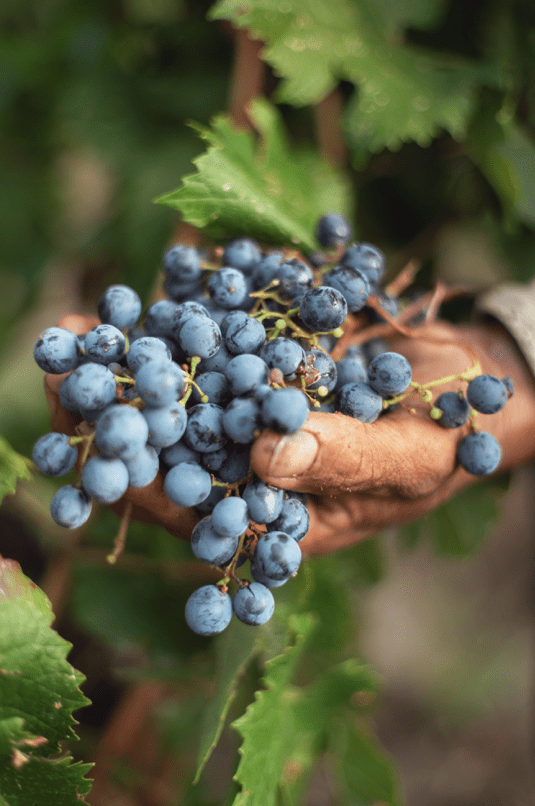
Yeilds and Quality
Yields were slightly higher than average, primarily due to good fruit set and the absence of spring frosts. The quality of the grapes is excellent – this vintage is all about power, with deep color, intense aromatics, and a good balance of acidity and alcohol. Red varieties such as Malbec, Cabernet Sauvignon, and Syrah show great promise, while whites like Chardonnay and Semillon/Chenin from high altitude have preserved their freshness and varietal character.
Conclusion
The 2025 vintage will be remembered as one of concentration, expressiveness, and purity. The combination of dry, warm weather, healthy grapes, and our usual high altitude long growing season with cool nights has resulted in wines of remarkable balance and complexity. Winemakers are especially enthusiastic about the reds from higher altitude vineyards and the aromatic whites from cooler zones.
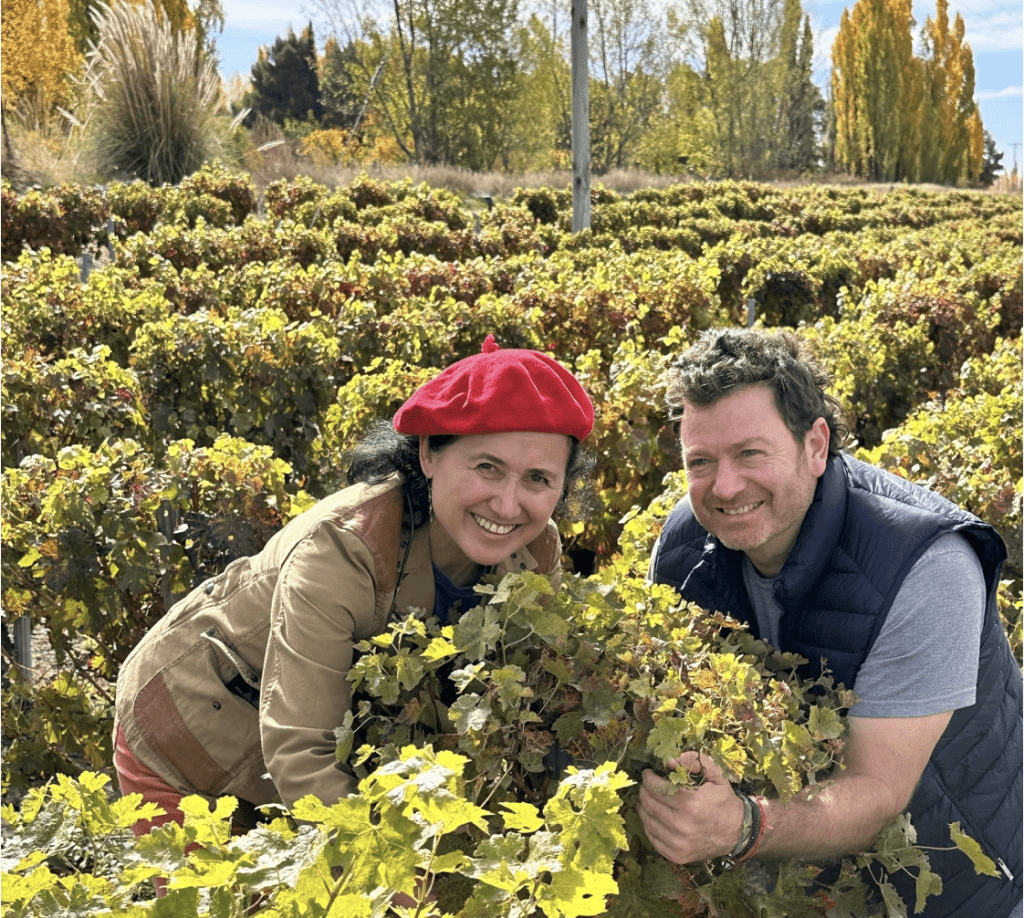
Laura Catena & Luis Reginato at the Adrianna Vineyard.
REGIONAL OBSERVATIONS
Uco Valley
Winter was quite a bit cooler than normal, with lower minimum temperatures. The vines stayed dormant during the very cold winter, and spring was very favorable for the plants, resulting in excellent bud break and fruit set. Summer continued with very suitable temperatures for good fruit set and canopy development, with good humidity and no temperature spikes—though February was warmer than usual.
Finally, March, the month of ripening, was cool and a bit humid, which slowed down the ripening process.
We had hail in Gualtallary (Adrianna Vineyard) and in El Cepillo (Angélica Sur Vineyard), but thanks to the hail-netting there was no damage.
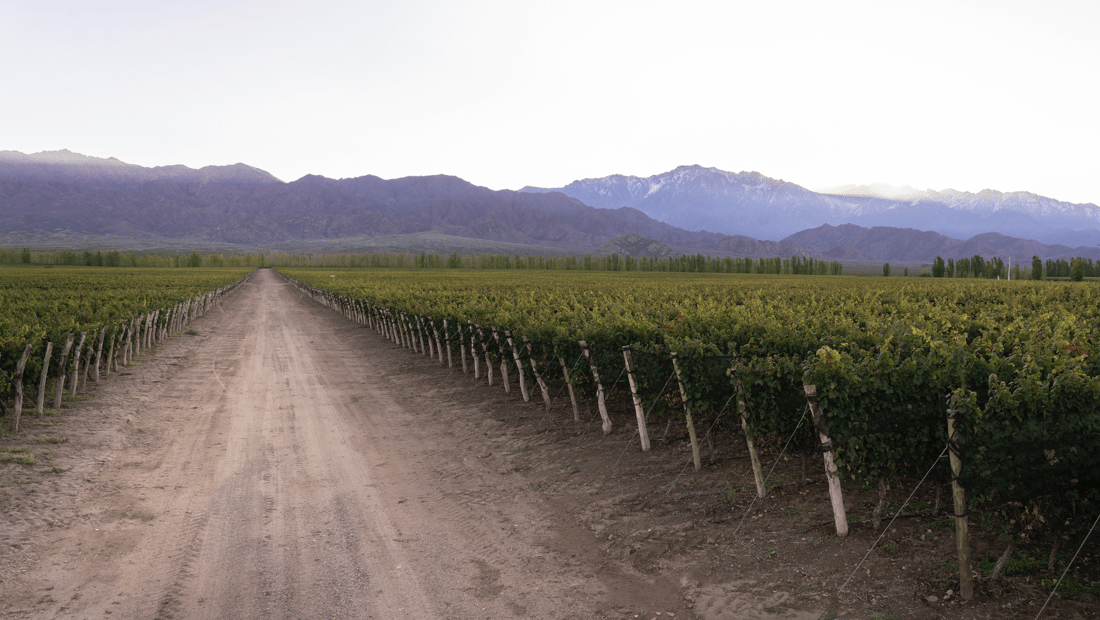
Primera Zona – Luján de Cuyo and Maipú
Winter was normal in terms of rainfall—in other words, very dry. On the other hand, we had good snow accumulation in the mountains, which ensured water supply during spring and summer. Temperatures were lower than usual, making it a very cold winter.
In contrast, spring was warmer and more humid than normal, which led to excellent bud break, with no issues from frost, and later a very good fruit set for the grapes. As a result, yields were 15% higher than last year.
Summer began with slightly more rainfall and average temperatures in December, followed by a warmer and rainier January, and a very dry and slightly warmer February. Finally, in March and April, we had rainfall and a cool front.
Overall, we had very favorable weather for the growth and development of the vines. Good humidity and moderate spring temperatures ensured a high number of shoots and clusters. Entering summer with good moisture levels and warm temperatures allowed us to develop astrong canopy, ensuring lots of leaves performing photosynthesis.
Toward the end of summer, higher-than-usual temperatures accelerated the ripening of the grapes, but in March and April, cooler temperatures brought harvest dates back to normal.

The Catena Institute of Wine has recently published three ground-breaking studies:
15th International Terroir Congress
The Catena Institute of Wine held (along with the local Mendoza University) for the first time in Mendoza, the 15th International Terroir Congress in November 2024. In Laura’s words, it was incredibly exciting: “We explored geology and soil in the vineyards, gaining a deeper understanding of how terroir influences the wines of our high-altitude region. We discussed the remarkable diversity of soils and how they express themselves in the flavors of our wines and also enjoyed great evening activities.” Famous soil and climate scientists such as Dr. Kees Van Leeuwen (Bordeaux), Dr. Benjamin Bois (Burgundy) and Dr. Etienne Neethling (Angiers) were in attendance. Catena’s Dr. Adrianna Catena (Economic Historian), Dr. Roy Urvieta and Catena Institute Director Fernando Buscema gave presentations at the congress.
• +250 international attendees: Wine and vineyard scientists, wine trade, press, and wine lovers.
• +65 sessions on terroir covering Soil, Climate, Plant Material & Management and Malbec.
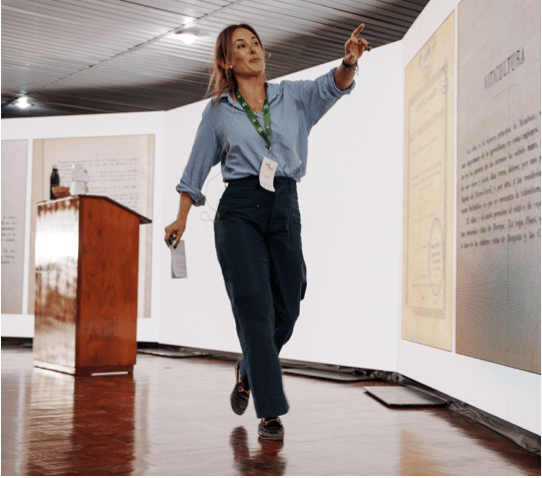
Dr. Adrianna Catena discussing her research on the introduction of French grape varietals in Argentina (1850-1930) at the Terroir Congress.
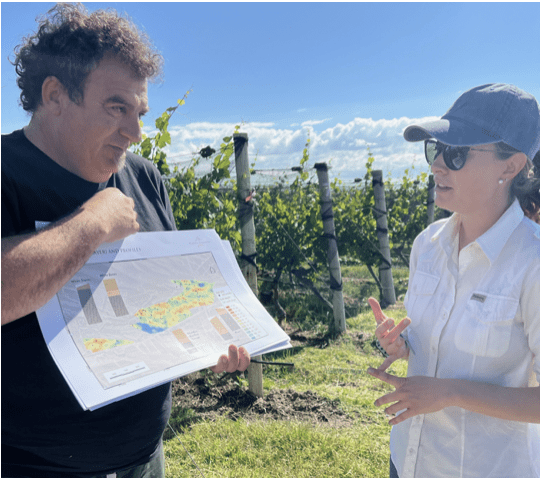
Alejandro Vigil & Guillermina Van Houten, visiting Adrianna Vineyard with Terroir Congress group.
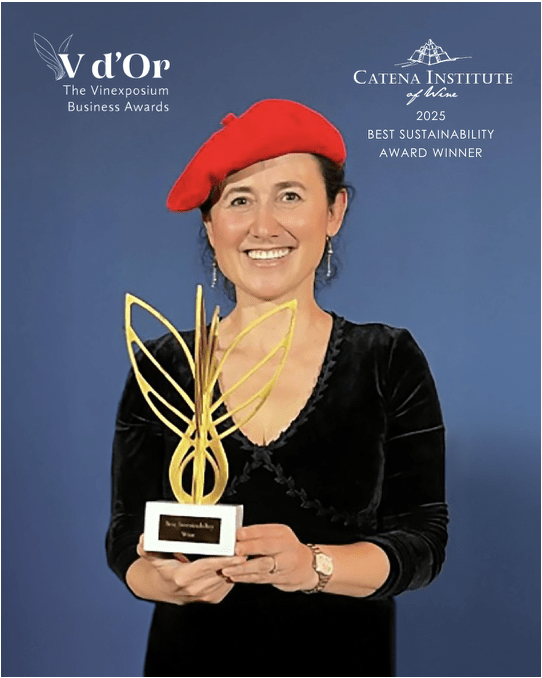
V D’Or Best Sustainability Award
On February 9th, in Paris, The Catena Institute of Wine was awarded the V D’Or Best Sustainability Award for its world-class research and advancements focused on high-altitude, terroir, Malbec and massale selections. Founded in 1995 by Dr. Laura Catena, the Catena Institute was created with the mission to elevate Argentine wine for another 200 years, using science to preserve nature and culture.
/